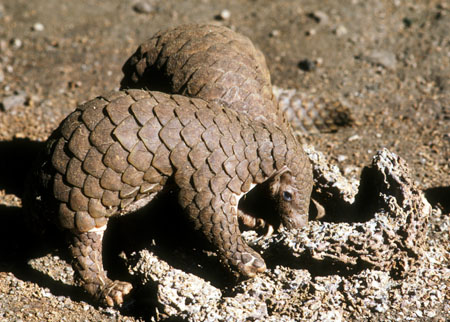As with all wildlife subjects, photographing small mammals requires a background of information regarding the particular subject species. Finding out about where a species can be found, its typical daily habits, the relevant breeding locations and periods, the preferred food, and any migratory patterns increases the chances of success.
 |
| Pangolins, Anuradhapura, Sri Lanka |
When photographing any small creature it is important to obtain the best perspective by getting down low. The level at which the subject sees the world is a good starting height. When seen from a low angle, it is usually possible to obtain more intimate shots and control the background in a manner that provides some environmental information. In many cases it is not possible to use a tripod because the camera must be very close to the ground or even in contact with it. The best approach is probably to lie flat on the ground and hand-hold the camera, perhaps resting the equipment on a bean bag.
Backgrounds should be kept clear of distractions wherever possible, and dropped out of focus using larger apertures and hence reduced depth of field. Small changes in viewpoint can often make a significant difference to the visible background. Use a long telephoto lens where necessary to get in close on the subjects. If the lens does not focus at a sufficiently short distance, use a single extension tube between the camera and the lens.
Try to capture not only a likeness of the animal but also some sort of action. Small animals are busy getting on with their lives and may be engaged in gathering food, tending to their young or protecting a den from intruders. Young animals are always mischievous and lively, so try to capture the attempts of the adults to control their wayward offspring.
Light is warmest and softest in the early hours of the morning, so try to use this period wherever possible. Similar soft light may be found in the evening. These periods are also those when the animals are likely to be most active. If the direction of the light is more convenient at one end of the day, concentrate efforts at the appropriate time. Side lighting is often a good option because it tends to give depth and reveal form and texture. Backlighting can produce good effects but may be harder to handle. Front lighting is perhaps the simplest to use but may lead to rather flat and uninteresting images. Working under overcast skies may be an advantage because contrast is reduced and exposure is easy to handle.
The use of flash is a tricky subject. Some small animals ignore completely the flash from a flashgun - perhaps it is too fast for them to register any particular danger. However, other animals may flee when flash is used.






